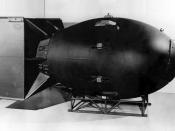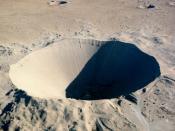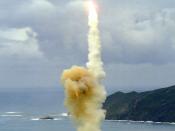The basis for no nuclear strikes between the two superpowers was that there existed a psychology known as Mutually Assured Destruction (MAD). This was the philosophy that both nations understood. They both knew that they held the power to destroy each other completely in the event of an attack. This struck fear in the hearts of both nations, causing little reaction to the current situation. This theory was based on three different ideas. One being that both nations had enough weapons to destroy the other. The second being, both nations can detect a first strike before it arrives. Finally, both nations are able to respond adequately before they are hit by the first strike. This leads right into the generic patterns of Second Strike Capability.
The idea behind Second Strike Capability was that a country could withstand a nuclear attack, and launch a counterattack upon the aggressor. This was the preparation made by both countries in order to scare the other away from a possible attack.
Another main concern for both countries was having technological superiority to the other. They had both developed nuclear capabilities, but needed a proper delivery vehicle. The invention and perfection of the Intercontinental Ballistic Missile (ICBM) was a huge boost to the nuclear delivery and striking capability of a country. This caused a shift in strategy of delivery and time.
The overall aim of both nations was to decrease the amount of response time that was inherent for their nuclear defense system. This led to the creation of the triad system. This was where nuclear weapons would be located on land, in the air, or in the sea. With atomic bombs being dropped from a plane, ICBMs were the first nuclear weapon based on the ground, and the Submarine Launched Ballistic Missile (SLBM) was...


